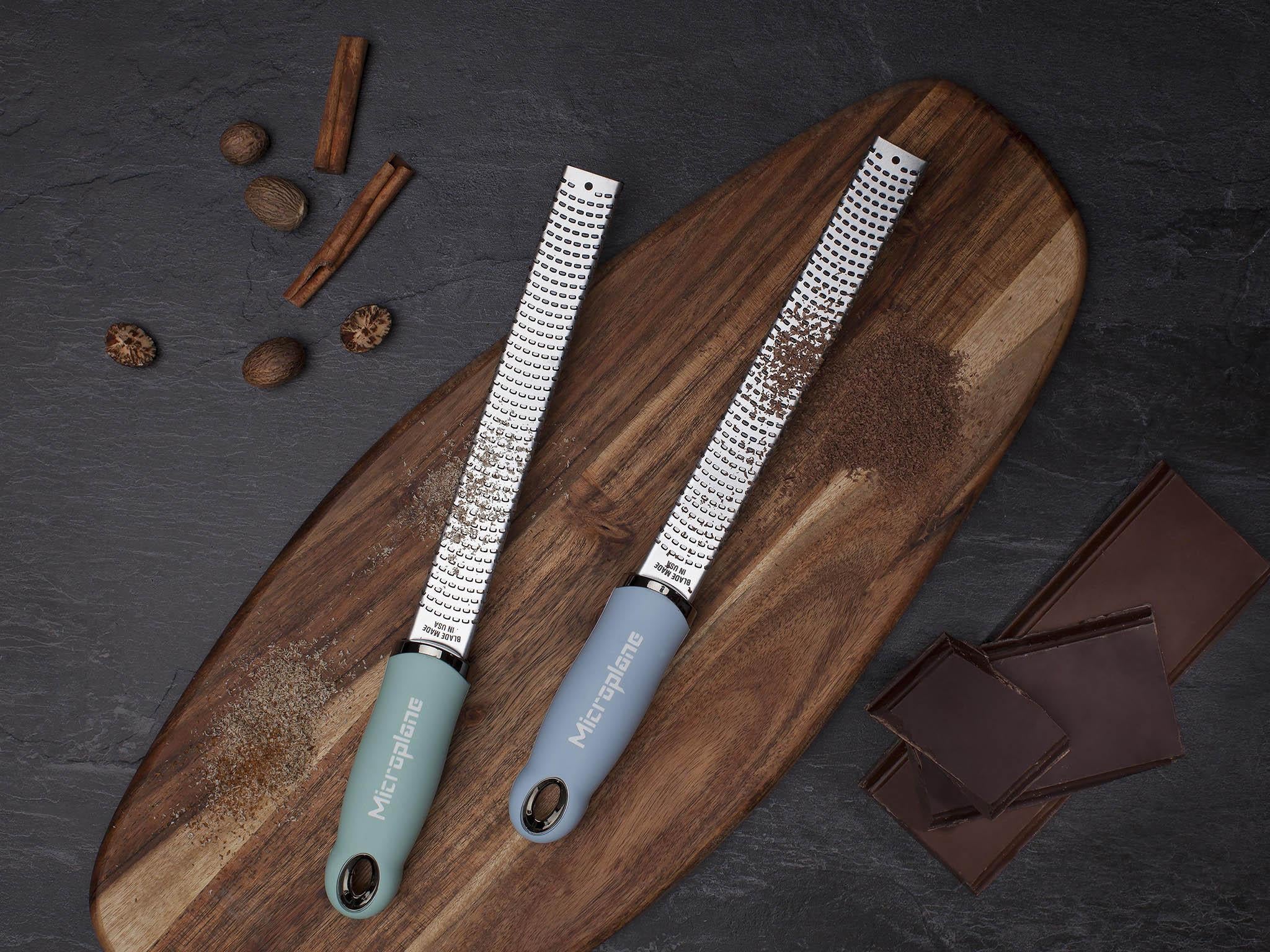How the microplane moved from the workshed to the worktop
Ever tried to zest a lemon and found your box grater just isn’t up to the job? Thanks to a handy woodworking tool, there’s an easy solution. Julia Platt Leonard explores how the microplane moved from the workshed to the worktop

Your support helps us to tell the story
From reproductive rights to climate change to Big Tech, The Independent is on the ground when the story is developing. Whether it's investigating the financials of Elon Musk's pro-Trump PAC or producing our latest documentary, 'The A Word', which shines a light on the American women fighting for reproductive rights, we know how important it is to parse out the facts from the messaging.
At such a critical moment in US history, we need reporters on the ground. Your donation allows us to keep sending journalists to speak to both sides of the story.
The Independent is trusted by Americans across the entire political spectrum. And unlike many other quality news outlets, we choose not to lock Americans out of our reporting and analysis with paywalls. We believe quality journalism should be available to everyone, paid for by those who can afford it.
Your support makes all the difference.The story of microplane kitchen graters is one that can be filed happily under “necessity is the mother of invention”, or in this case, reinvention. Today, microplane graters are an essential tool in the kitchen – making swift work of zesting citrus fruits, shaving chocolate or grating spices. But rewind to 1994 and if you were looking for a microplane, you’d find it in the hardware store, not a cookware shop.
The company began in Michigan in the late 1960s, then moved to Arkansas the following decade. It first manufactured a part for computer printers but when printers went laser, it was time to do something else. They landed on a way to create sharp metal teeth for woodworking tools. They developed a special photo-etching process that resulted in incredibly sharp, tiny teeth – imagine row upon row of razor sharp knives.
This was a boon to woodworkers but a woman in Canada had other ideas. She was making a cake and needed to grate some orange zest. Her zester – like many – wasn’t up to the job. It tore at the orange skin, grabbed bits of bitter pith and basically made the whole process a nightmare. Frustrated, she raided her husband’s woodworking toolbox, grabbed a microplane and got to work. I imagine she gave it a quick clean as well to remove any wood shavings first.
It wasn’t long before there was a rogue nation of cooks using microplane woodworking tools in the kitchen. The company seized the opportunity, introduced a kitchen division and launched its first line of rasp-style graters and zesters in 1998. These were very similar to woodworking tools and offered home cooks and professional chefs the same benefits in the kitchen as in the workshop – ultra sharp cutting edges for great results.
Why is microplane so good? Because the teeth are so sharp, the tool does the work so you don’t have to. It glides across the surface of the food and food doesn’t stick or clog the teeth. The results are consistent so if you’re zesting a lemon, everything comes out the same size. It also doesn’t dig into the food so no tearing. And from an investment standpoint, the blades are incredibly tough so they last a long time. I’ve had microplane graters for years and never had to replace them.
Soon, microplane launched different product lines like the Home series which are paddle shaped graters that offer a wider grating surface. The Professional series came later, an all metal, hand-held grater that could withstand constant use. Other innovations included plastic covers to protect the blades (and hands) when not in use. The Elite series goes a step further with protective covers that double as a catch for food and a measuring cup all-in-one to make cooking and clean-up easier and faster.
Another great benefit of microplane is they have a grater for any need – and I mean any. You’re positively spoiled for choice and, depending on the series, can find zester, spice, fine, coarse, and ribbon blades plus larger shavers, extra coarse, star, and ultra-coarse blades. Think about the tasks you do the most in the kitchen and start with those – you can always add on later. For me, the workhorses are the rasp-style grater for finely zesting lemons, limes and oranges or creating a soft cloud of grated parmesan cheese and also a paddle-style Professional grater.
The graters are dishwasher safe in the top rack, which is a big plus. The best seller is my favourite too, the premium classic zester with its 400 micro-teeth. It makes grating chocolate, spices, citrus and just about anything else, feel like child’s play.
Now they’ve launched a new Master series which screams out smart-looking and stylish in the kitchen. There are five different graters with gorgeous walnut handles – made in Kentucky in the US – that harken back to their early days when microplane only made woodworking tools. It’s a nice reminder that sometimes the best ideas get their start in unexpected places.
Join our commenting forum
Join thought-provoking conversations, follow other Independent readers and see their replies
Comments